Come find the best old-but-never-out pots that work flawlessly on your stoves.
By Editor Team | May 31, 2023
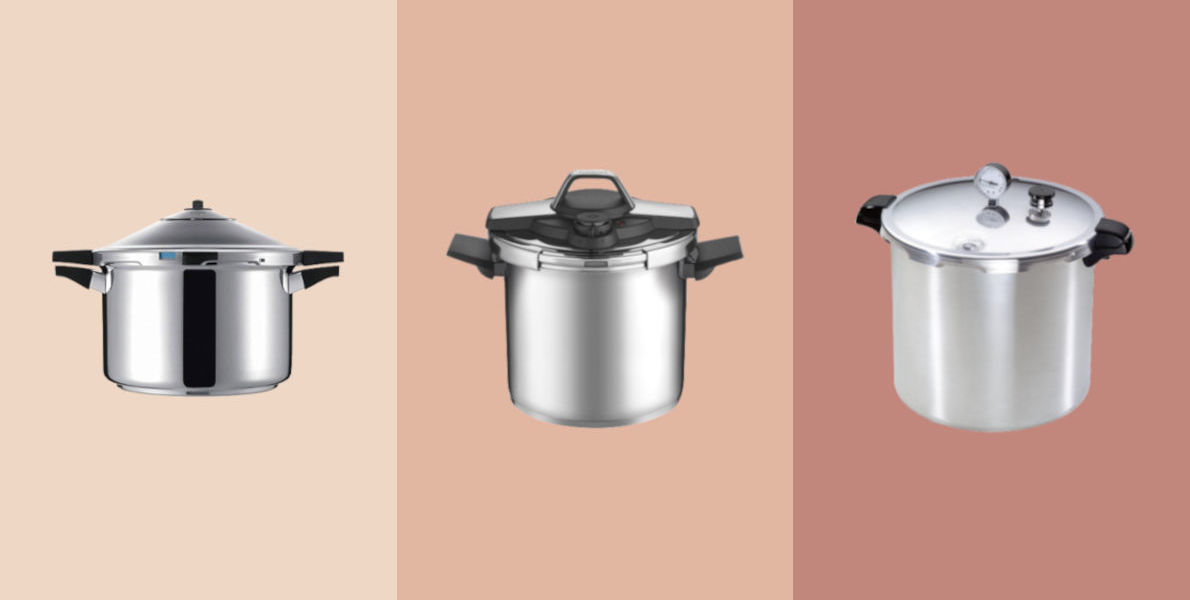
EVEN THE ERA of the electric era, stovetop pressure cookers are never out. Though it’s less convenient and has no schmancy gimmicks, this on-stove version is still undeniably great. It sears far better, browns darker, cooks noticeably faster, hits (or closest to) 15 psi, maintains easier and lasts longer. It’s also full of wide sizes to select—from a small 1.5-quart pot for preparing a cup of tendered bean soup to a huge 30-quart container for cooking for a camp or canning fresh harvests.
For common cooking, we prefer “new generation” pressure cookers with automatic spring-valve (or non-venting) regulators to old jiggle-topped ones. These modern models are safer, quieter, more precise and simpler to use—they have no scary sound for a peace of mind when cooking.
Moreover, we skip the huge models of bigger than 12 quarts because they’re likely to use for pressure canning, not regular cooking. If you’re a set-it-and-walk-away type or tends to cook sticky ingredients, consider a good electric pressure cooker for more convenient.
1
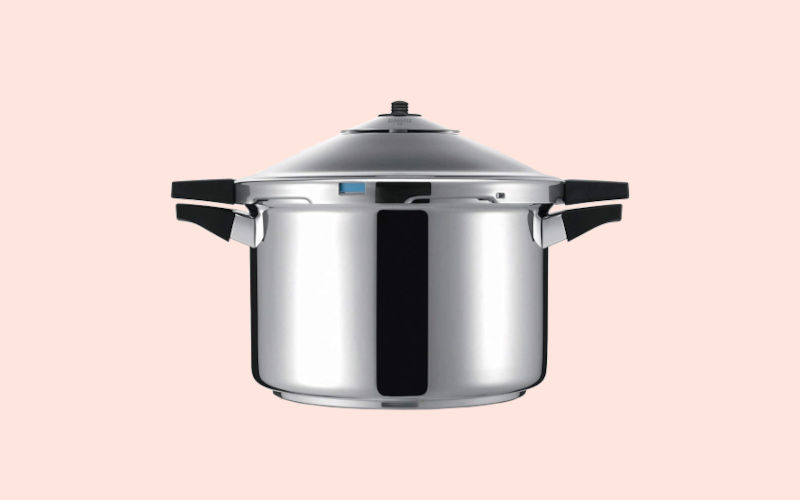
Image: Kuhn Rikon
Best Overall
Kuhn Rikon is truly the device for pressure cooking devotees. This Swiss pot is built neatly and solidly with all-metal valve parts. It’s crafted excellently and neatly—a quality stainless-steel build with a big aluminum encapsulated—and offers an extensive 11”-diameter cooking surface for effective searing and sauteing benefits. Its pressure regulator is overcoming. It can maintain temperature steadily and precisely with no struggle, delivering far impressive outcomes on every task, even for delicate eggs, fish or risottos—all are tastier and juicier than other rivals in fast, quiet operation.
It sports in a minimal look with various reliable safety features. A hiccup, you’ll need to hold the top valve and wait a minute for doing quick release the pressure—not the friendliest device for beginners. But the efficiency and simplicity make it a worthwhile investment for serious some.
We Picked: 8.45 quart (30331)
Material: 18/10 stainless steel with a thick 3-ply base
Pressure Setting: 2 settings: High (11.6 psi) and Low (5.8 psi)
Induction Compatibility: Yes
2
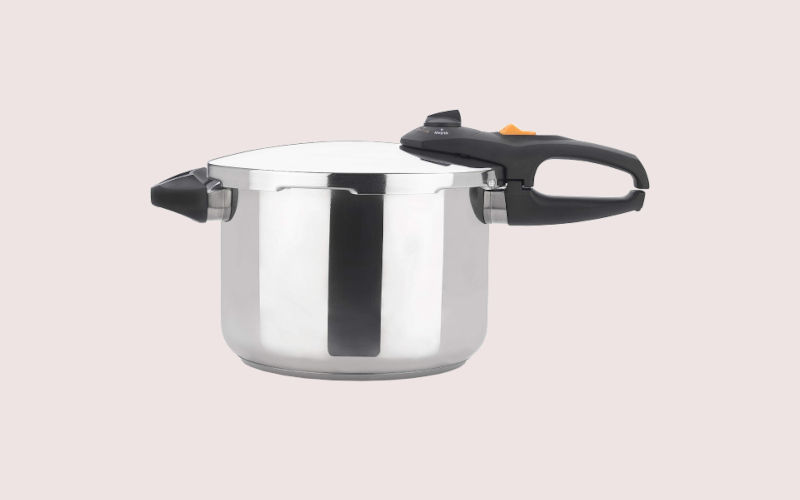
Image: Zavor
Best Value
Zavor Duo has been our matchless budget option for several years. It’s actually the same of “Fagor Duo” in the new company face (run by the old workers), which got a big reputation from America’s Test Kitchen for unbeatable productivity beyond the cost. This solid stainless-steel cooker offers a large 10”-diameter cooking space for welcoming searing and two pressure settings—hard to find at this price. Comparing to the high-enders, Zavor takes longer times to reach the “sweet spots” and is poorer to stabilize the temperature, but it delivers pleasing jobs finally.
We like how intuitive to use—easy to set and release the pressure. The long handle with a simple lock lid is also preferable for newbies. Not that noiseless workhorse, but it’s an unbeatable solid performer among budget comrades.
We Picked: 8.4 quart
Material: Stainless steel with a 3-ply base
Pressure Setting: 2 settings: 2 settings: High (15 psi) and Low (8 psi)
Induction Compatibility: Yes
3
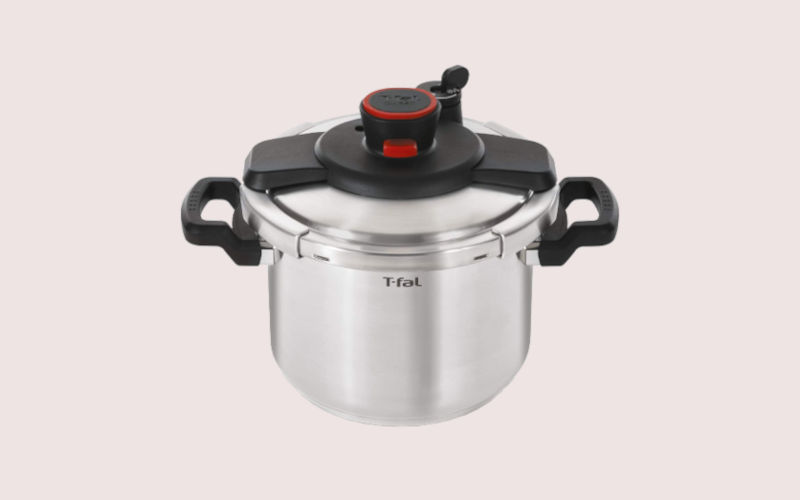
Image: T-fal
Easiest to Use
If you just step into the pressurizing garden and need a device that is easy to use and supportively safe, T-fal Clipso is your match. At under $120*, it feels very solid (and pretty hefty) and delivers reasonably even and rapid outcomes. There’s only one pressure level but should suffice for entry-level errands. It has a roomy cooking space, but the narrow-and-tall shape might be slightly cumbersome for searing—though not bad to get the job done. Another thing we like: no matter what pressuring, it operates really quiet.
The best part is the unique clip-liked lid, which can be securely opened by one hand and controlled the amount of steam released smoothly—without burning risk. Either newbies or even thrifty seekers, it’s a no-regret choice.
We Picked: 6.3 quart
Material: Stainless steel with an encapsulated base
Pressure Setting: 1 setting (12 psi)
Induction Compatibility: Yes
4
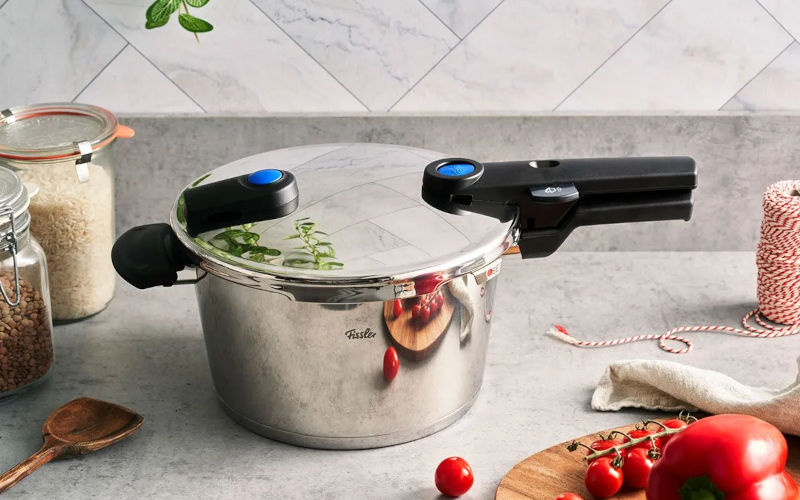
Image: Fissler
Pro’s Favorite
Fissler Vitaquick has long been a solid choice for experts who desire the topmost performance and quality, granted by America’s Test Kitchen and Consumer Reports. With German-constructed stainless-steel with a thick 3-ply entire the bottom and a well-designed shape, it sears the best—deep browns and beautiful crusts—and pressures excellently. It’s highly admired for reaching true 15 psi and setting pressure flexibly, which produce speedy and deep flavored results, even for eggs and puddings—but the Kuhn Rikon is slightly better for handling delicate jobs.
The use is quite straightforward. The auto-locked lid is painless to lock in place, open and notice the pressure, though some mightn’t like its pressure release—the hot “jet steams” venting from the handle. The price is high, but the performance is the real.
We Picked: 8.5 quart
Material: 18/10 stainless steel with a thick 3-ply base
Pressure Setting: 2 settings: High (15 psi) and Low (8 psi)
Induction Compatibility: Yes
5
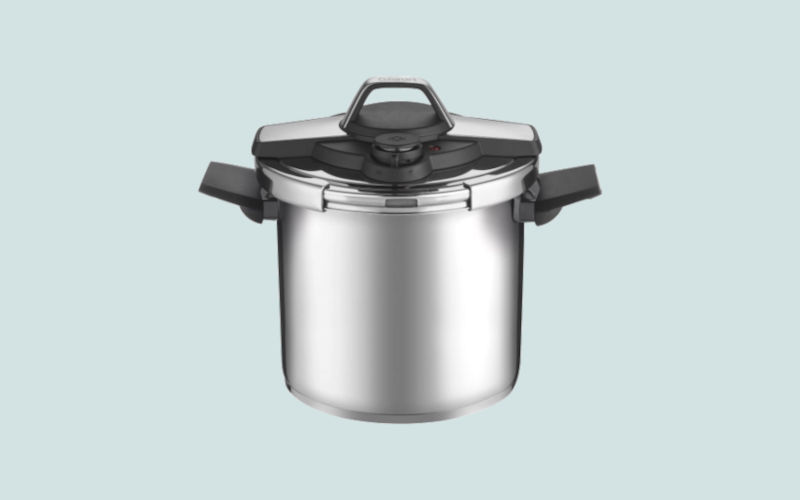
Image: Cuisinart
Best User-Friendliness
Cuisinart never disappoints us in the ease of use, even for unskilled newcomers. The solid stainless-steel build cladded with 3-ply base delivers nice thermal performance, like a decent stainless-steel pot. The tall and narrow shape makes slightly unwieldy for searing jobs, but it’s perfect for making rich stocks, stews or bean soups, vice versa. The pressurizing outcomes aren’t at the top peak, but it fulfils regular home duties smoothly.
User-friendly, we do like the lid mechanism—such an easy-to-use device. You can safely open, lock and release pressure effortlessly with one hand. It also offers decent safety features, big cool handles and clear filling marks, though the manual gets pretty confused. What’s More? The budget-friendly price makes it more attractive to buy.
We Picked: 8 quart
Material: Stainless steel with a 3-ply base
Pressure Setting: 1 setting (15 psi)
Induction Compatibility: Yes
6
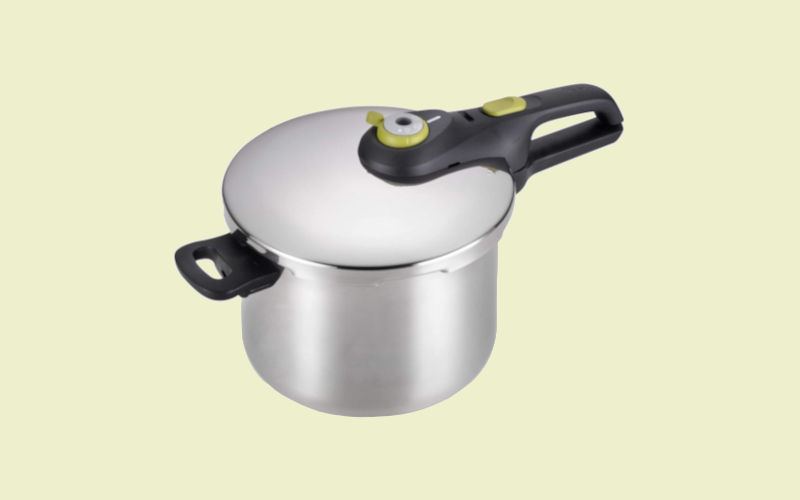
Image: T-fal
Budget Buying
There’s a lot to love with this T-fal. Given under $100*, it’s built sturdy with a 3-ply base and has an intuitive operation. Our favorite part is it offers dual pressure settings: both 10 and 15 psi—a rarity in budget comrades. The performance is significantly lower than those top-class couterparts. It produces less thermal consistency and inefficient to create subtle flavor, but it can give desired outcomes when cooking hard ingredients, like bean soups and meat braises. More things we like, it operates quietly and is dishwasher-safe.
It’s easy (and no scary) to use, even for inexperienced cooks. Just switch the valve to set the cooking and releasing the diffusing steam, with no need to hold it. Whether a pressure-cooking newbie or a budget-seeker cook, it’s good to consider.
We Picked: 6.3 quart
Material: Stainless steel with a 3-ply base
Pressure Setting: 2 settings: High (15 psi) and Low (10 psi)
Induction Compatibility: Yes
7
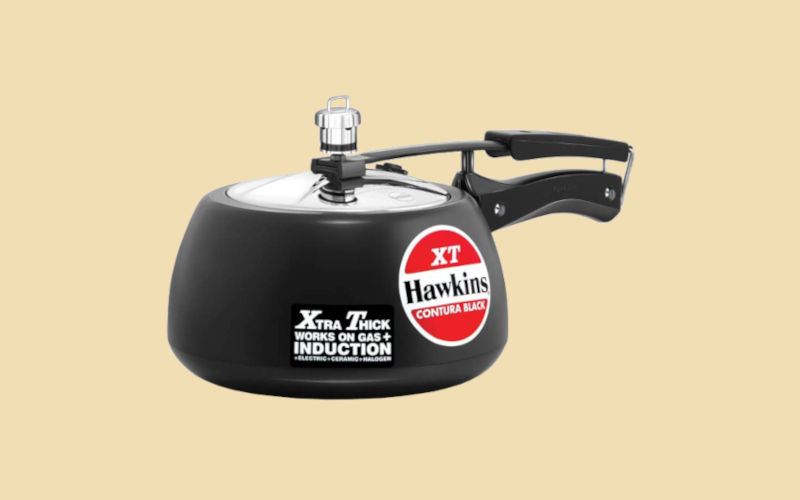
Image: Hawkins
Best Small (& Stylish)
Hawkins Contura has shined on the scene for a small, functional proposition. It comes with a unique, chic design that might feel a bit tricky at first. But once you do right, it becomes a very handy mate for instant cooking a small portion of rice, bean or side dishes. The performance is crisp and clean—no dirty food spills with the whistle. We also like the hard-anodized body for a wise balance between lightweight and toughness. The thick 4.88-mm magnetic plate is great for induction and flat-stove cooking.
The sealing system is simple and reliable. A snag, the lid makes slightly awkward to open and clean some area—still an acceptable engineering compromise. That said, it’s hard to beat the simplicity and practicality and of this little monster.
We Picked: 3.0 liter
Material: Hard-anodized aluminum
Pressure Setting: 1 setting (15 psi)
Induction Compatibility: Yes
8
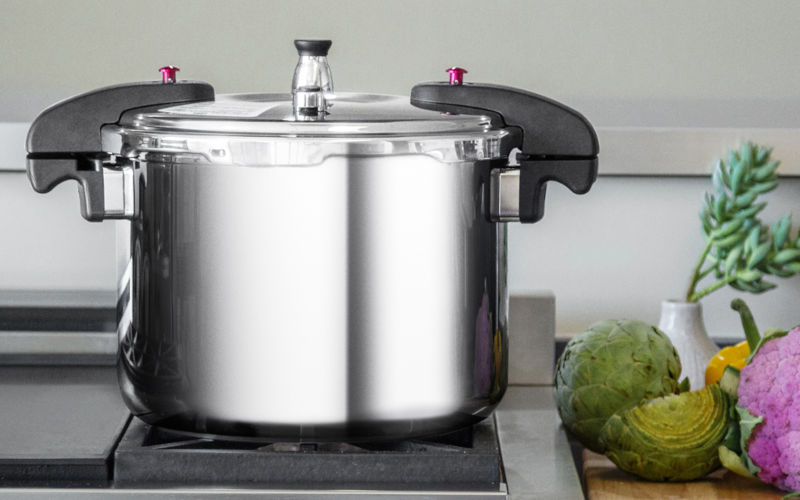
Image: Buffalo
Best for Big Batches Cooking (& Canning)
Buffalo is a solid choice if you want a workable pressure cooker that is large enough to cook for a crowd, make stocks from large bone cuts, braise a whole turkey or do some caning. With a tough, polished, highest-grade surgical stainless-steel and a clad bottom, it can handle everything smoothly, though it’s likely to get scotches too fast than the high-. Another perk, it feels well-made and very sturdy without a painfully heaviness.
The use is safe and straightforward. The whole security is decent. The cleanup is breezy in every single area. Thinking that it’s not a modern regulator model with only one pressure setting, this big pot is almost as expensive as our topflight performers, but you’ll get a versatile big pot for both pressurizing and canning.
We Picked: 15 quart
Material: Stainless steel with a 3-ply base
Pressure Setting: 1 setting (12.8 +-1.42 psi psi)
Induction Compatibility: No
9
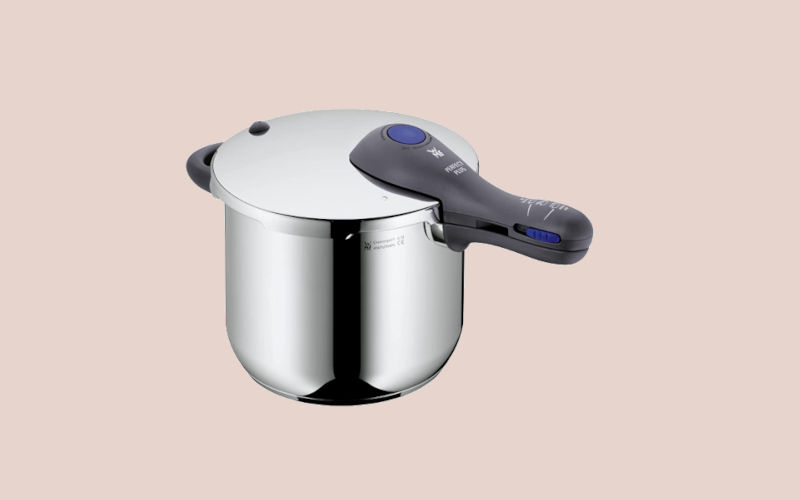
Image: WMF
Best Solidness
WMF Perfect Plus is like a German tank that reminds you that “you get what you pay for”. The neat, heavy-gauge 18/10 stainless-steel with a 4.5-mm aluminum clad base makes it extremely solid and cooks flawlessly, delivering impressive heat evenness and retention, delivering beautiful, deeper searing and steady pressurizing outcomes. The performance comes pretty close to Kuhn Rikon—slightly less thermal consistency but finally producing desired flavorful outcomes, even for delicate recipes.
To use, open, monitor and clean, everything is unfussy and noiseless. Like the Fissler, the pressure indicator is admirable—not only easy to notice, it lets regulating the pressure you want more precisely. If you don’t mind with its big price, it’s an heirloom quality product.
We Picked: 6.5 Liters
Material: Stainless steel with a 3-ply base
Pressure Setting: 2 settings: High (13.8 psi) and Low (6.5 psi)
Induction Compatibility: Yes
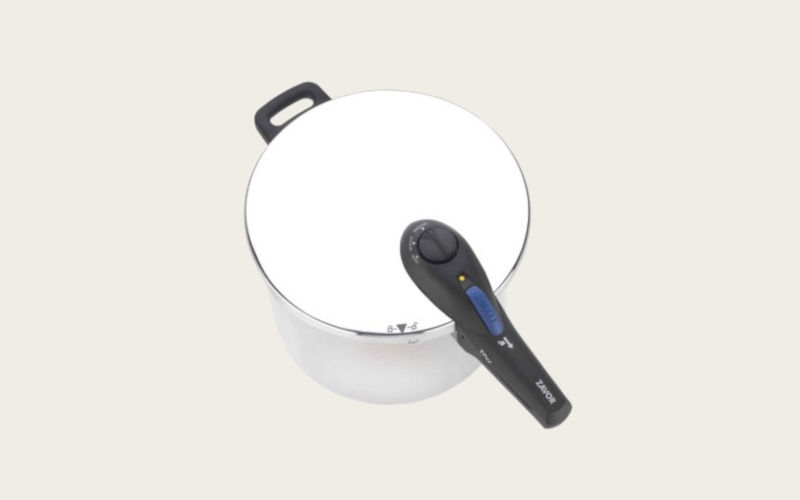
There are a lot of great on-stove pressure cookers out there, and we don’t have enough room to eye them all. Here’re some nice products you might want to consider.
Fissler Vitavit ($360* for 8.5-qt): An upgraded version of the Fissler Vitaquick. They have the same tank quality and perform equally great, but the Vitavit is much easier and slightly quieter to use, with 3 pressure settings. The indicator is the easiest to notice in the market—you can instantly know what pressure is from its “traffic light” colors. If you prefer these fringes or feel terrified with the monster operation of the Vitaquick, it’s worth to spend an extra $100* for.
Presto 01362 ($70* for 6-qt): This is one of the most popular budget pressure cookers that can really cook. It’s not that built-to-last staple and performs in acceptably good (with a single pressure level), but it should be ok for an entry level, with a low upkeep.
Tefal Clipso Minut Easy ($260 for 6 L): As a sibling of T-fal Clipso in a Japanese version, this robot-alike machine is easy to use, open and release steam. The manufacturer notes to avoid cooking milk-based recipes, though.
Viking Easy Lock Lid ($300* for 8-qt): With a solid build like a fine 3-ply base cookware, it gives fulfilling outcomes but not as same league as Kuhn Rikon or Fissler, particularly for delicate dishes. But the one-hand-open lid is greatly welcomed for unexperienced cooks.
Zavor EZLock ($140* for 8-qt): It’s a beginner-friendliest model—remind us of the Cuisinart. We appreciate the automatic self-locking mechanism that can lock firmly in any position and the safe steam release device, preventing burning risks. The tall and narrow shape makes pretty stubborn to sear, though it has a wide (10”-diameter) base.
Zavor Zpot ($90* for 6.3-qt): If you can sacrifice some cooking efficient (and cook only one pressure level) to get nearly the same characteristics of Zavor Duo, this younger sibling is reasonable to pick—to save an extra $30.
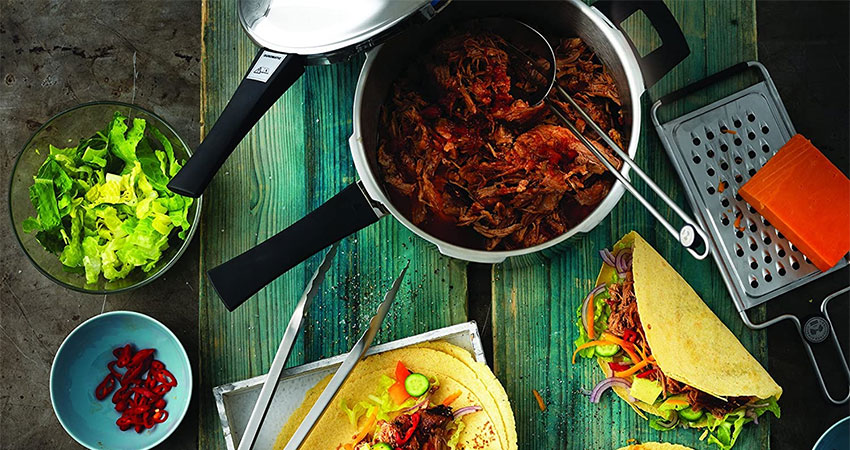
Pressure cookers work on a very basic principle: seal a solid pot tightly and raise the boiling point—from 212 to 250 degrees—to create the pressure inside. This produces fast, more tender and concentrated results than regular cooking. From the first “steam digesters” in 1681, the development of these machines went very far. However, not all modern products work equally, though they look a lot alike. So, keep along with these guidelines when buying:
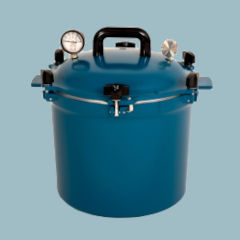
Weighted-valve regulator has a weight loaded on the top of the cooker that will vent steam when reaching a certain pressure point. While cooking, the weight valves will begin to rock back and forth—so, it’s known as a “jiggle-top” cooker.
It’s rather suitable for experienced cooks who don’t mind alarm noise or canning. The simple assembly and fewer gadgets make it a low-cost option.
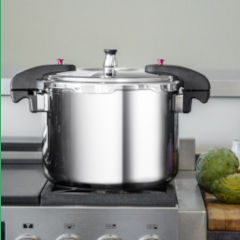
Modified Weighted-valve regulator is like a hybrid type. Once hitting the certain level, it will continuously lift up and down the valve to release the excess pressure, so it doesn’t make rattle noise like a jiggle-top cooker, though you still hear “whistle” or “hissing” sound.
Also, it’s easier to use and pricier than the prior models—but not equal to spring-loaded models. A nice bargain of performance, ease of use and cost.
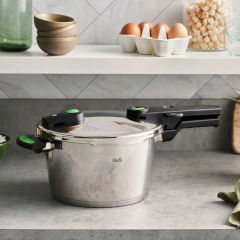
Spring-valve regulator—modern or 2nd generation pressure cooker—has a spring-loaded indicator that will “signal” (popping up, mostly) you when reaching pressure. It offers advanced features to adjust pressure more safely and controls heat more consistently, with less water loss. So, even unskilled people can produce satisfying results at ease.
Of all, it works the easiest and the quietest—least scary. However, it’s the most expensive and needs to replace some parts occasionally.
| High | Low | |
| Pounds/inch2 (psi) | 6 to 8 | 13 to 15 |
| Kilopascals (kPa) | 41 to 55 | 90 to 103 |
| Bar | .41 to .55 | .90 to 1.03 |
| Capacity (quart) | Recommended for |
| 2-3 qt | Making sauces, some side dishes or preparing rice for 1-2 servings. It’s good additional for kitchen, too. |
| 4 qt | Single or couples, making one dish for a family of 4. |
| 6 qt | Recommended sized for a normal-sized family of 4-6. |
| 8 qt | Recommended sized for a larger family, or cooking beans and freeze food. |
| 10 to 12 qt | Catering or any other semi-commercial purposes for 10-15 people at a time, or do some canning. |
| More than 15 qt | Mostly used for pressure canning but can be used for commercial or feeding a camp. |